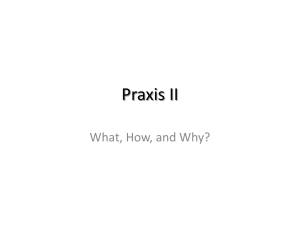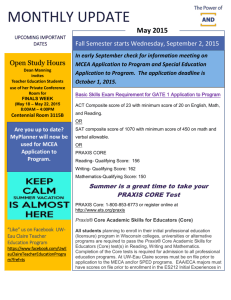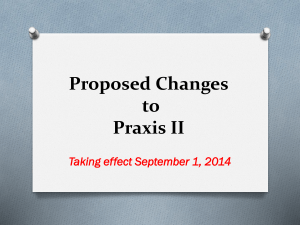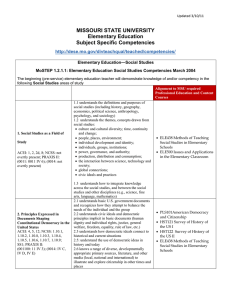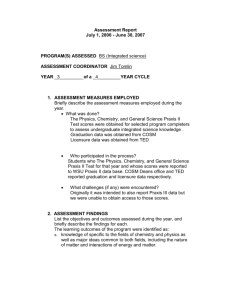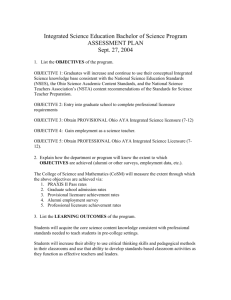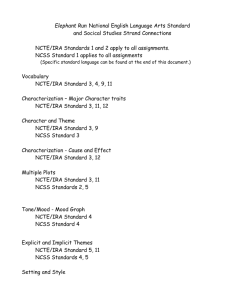Updated 3/10/11 MISSOURI STATE UNIVERSITY Elementary
advertisement
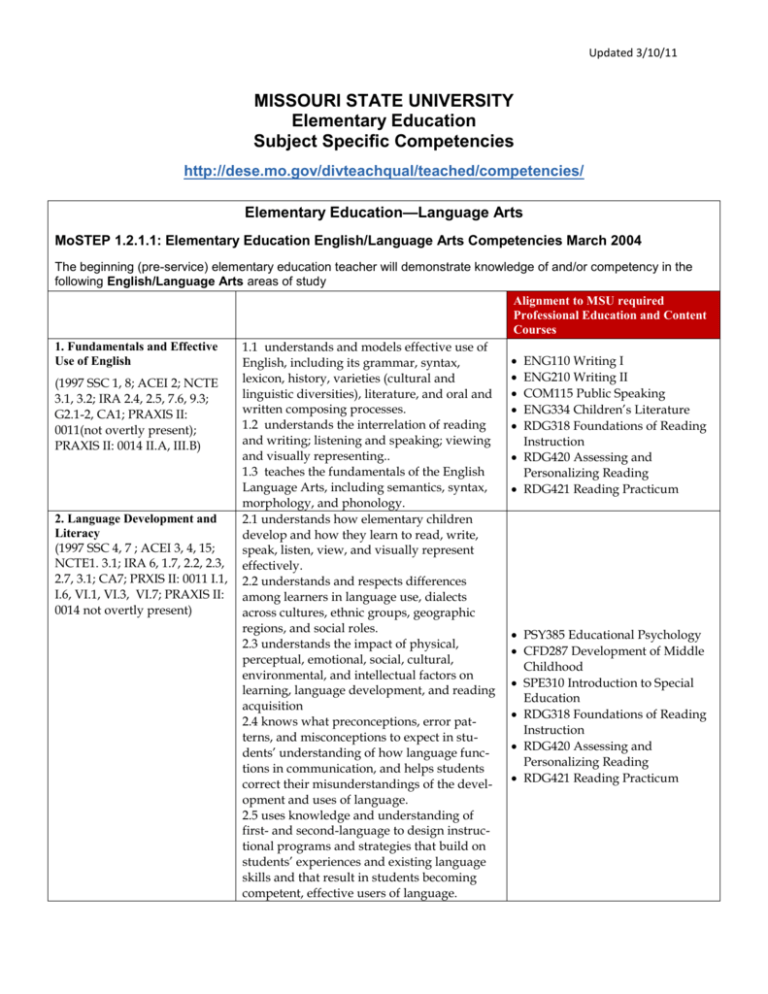
Updated 3/10/11 MISSOURI STATE UNIVERSITY Elementary Education Subject Specific Competencies http://dese.mo.gov/divteachqual/teached/competencies/ Elementary Education—Language Arts MoSTEP 1.2.1.1: Elementary Education English/Language Arts Competencies March 2004 The beginning (pre-service) elementary education teacher will demonstrate knowledge of and/or competency in the following English/Language Arts areas of study Alignment to MSU required Professional Education and Content Courses 1. Fundamentals and Effective Use of English (1997 SSC 1, 8; ACEI 2; NCTE 3.1, 3.2; IRA 2.4, 2.5, 7.6, 9.3; G2.1-2, CA1; PRAXIS II: 0011(not overtly present); PRAXIS II: 0014 II.A, III.B) 2. Language Development and Literacy (1997 SSC 4, 7 ; ACEI 3, 4, 15; NCTE1. 3.1; IRA 6, 1.7, 2.2, 2.3, 2.7, 3.1; CA7; PRXIS II: 0011 I.1, I.6, VI.1, VI.3, VI.7; PRAXIS II: 0014 not overtly present) 1.1 understands and models effective use of English, including its grammar, syntax, lexicon, history, varieties (cultural and linguistic diversities), literature, and oral and written composing processes. 1.2 understands the interrelation of reading and writing; listening and speaking; viewing and visually representing.. 1.3 teaches the fundamentals of the English Language Arts, including semantics, syntax, morphology, and phonology. 2.1 understands how elementary children develop and how they learn to read, write, speak, listen, view, and visually represent effectively. 2.2 understands and respects differences among learners in language use, dialects across cultures, ethnic groups, geographic regions, and social roles. 2.3 understands the impact of physical, perceptual, emotional, social, cultural, environmental, and intellectual factors on learning, language development, and reading acquisition 2.4 knows what preconceptions, error patterns, and misconceptions to expect in students’ understanding of how language functions in communication, and helps students correct their misunderstandings of the development and uses of language. 2.5 uses knowledge and understanding of first- and second-language to design instructional programs and strategies that build on students’ experiences and existing language skills and that result in students becoming competent, effective users of language. ENG110 Writing I ENG210 Writing II COM115 Public Speaking ENG334 Children’s Literature RDG318 Foundations of Reading Instruction RDG420 Assessing and Personalizing Reading RDG421 Reading Practicum PSY385 Educational Psychology CFD287 Development of Middle Childhood SPE310 Introduction to Special Education RDG318 Foundations of Reading Instruction RDG420 Assessing and Personalizing Reading RDG421 Reading Practicum Updated 3/10/11 3. Reading and Comprehension Processes (1997 SSC2,5,6,10,11; ACEI 5,6, 8, 10, 11, 13 ; NCTE 3.1, 3.2, 3.3, 3.4, 3.5. 3.6, 3.7; IRA 1.3, 1.4, 1.5 , 2.6, 2.6, 2.12, 2.13, 5.1, 5.2, 5.3, 6.1, 6.2, 6.3, 6.4, 6.5, 6.6, 7.1, 7.2, 7.3, 7.4, 7.5, 8.1; G1.2, 1.5-6, 1.9, CA2,3,5; PRAXIS II: 0011 I.2, I.2, I.4, I.7, I.8, VI.2; PRAXIS II: 0014 I.A, I.B, I.C, II.B, III.B.1) 4. Thinking and Communicating Through Writing, Speaking, and Listening (1997 SSC 3, 9; ACEI 11, 13, 14; NCTE 3.1, 3.2, 3.4; IRA 2.6, 2.7, 9.1, 9.2; G2.1, CA4,5,6; PRXIS II: 0011 I.9; PRAXIS II: 0014 III.A, III.B) 3.1 applies theory-based reading processes to foster student literacy. 3.2 uses a variety of strategies to monitor and promote reading comprehension and the ongoing development of independent vocabulary acquisition. 3.3 uses a broad spectrum of narrative and expository reading materials, including works written specifically for elementary-aged children, that include different topics, themes, stories, poems, biography, and non-fiction; includes a range of cultures, works from a range of genres, male and female authors, authors of color. 3.4 teaches students how to locate and use a variety of print, non-print, and electronic reference sources. 3.5 teaches children to read with a comprehensive instructional program that includes an emphasis on use of phonemic awareness, letter/sound relationships (phonics), context (semantic and syntactic), and text that has meaning for students. 3.6 teaches students to read competently, to read fluently, and to enjoy reading through the use of multiple instructional strategies, available instructional and information technologies, and the wise selection of authentic reading 3.7 helps students think critically about what they read. 3.8 emphasizes individualized and personalized reactions to reading and the value of sharing those responses. 4.1 uses a wide range of writing strategies to generate meaning and to clarify understanding. 4.2 uses the process of composing to prepare information to share orally, visually, and/or in written format. 4.3 creates instruction, activities, and experiences that develop varied and effective writing, speaking and presentation skills to communicate with a variety of audiences for a variety of purposes. 4.4 provides students with many different writing and speaking experiences in order to teach the skills of writing and speaking. 4.5 helps students develop their capacities to listen so that they understand, consider, respond to, and discuss spoken material, including non-fiction, stories, and poems. ENG334 Children’s Literature RDG318 Foundations of Reading Instruction RDG420 Assessing and Personalizing Reading RDG421 Reading Practicum ENG110 Writing I ENG210 Writing II COM115 Public Speaking RDG318 Foundations of Reading Instruction RDG420 Assessing and Personalizing Reading RDG421 Reading Practicum Updated 3/10/11
